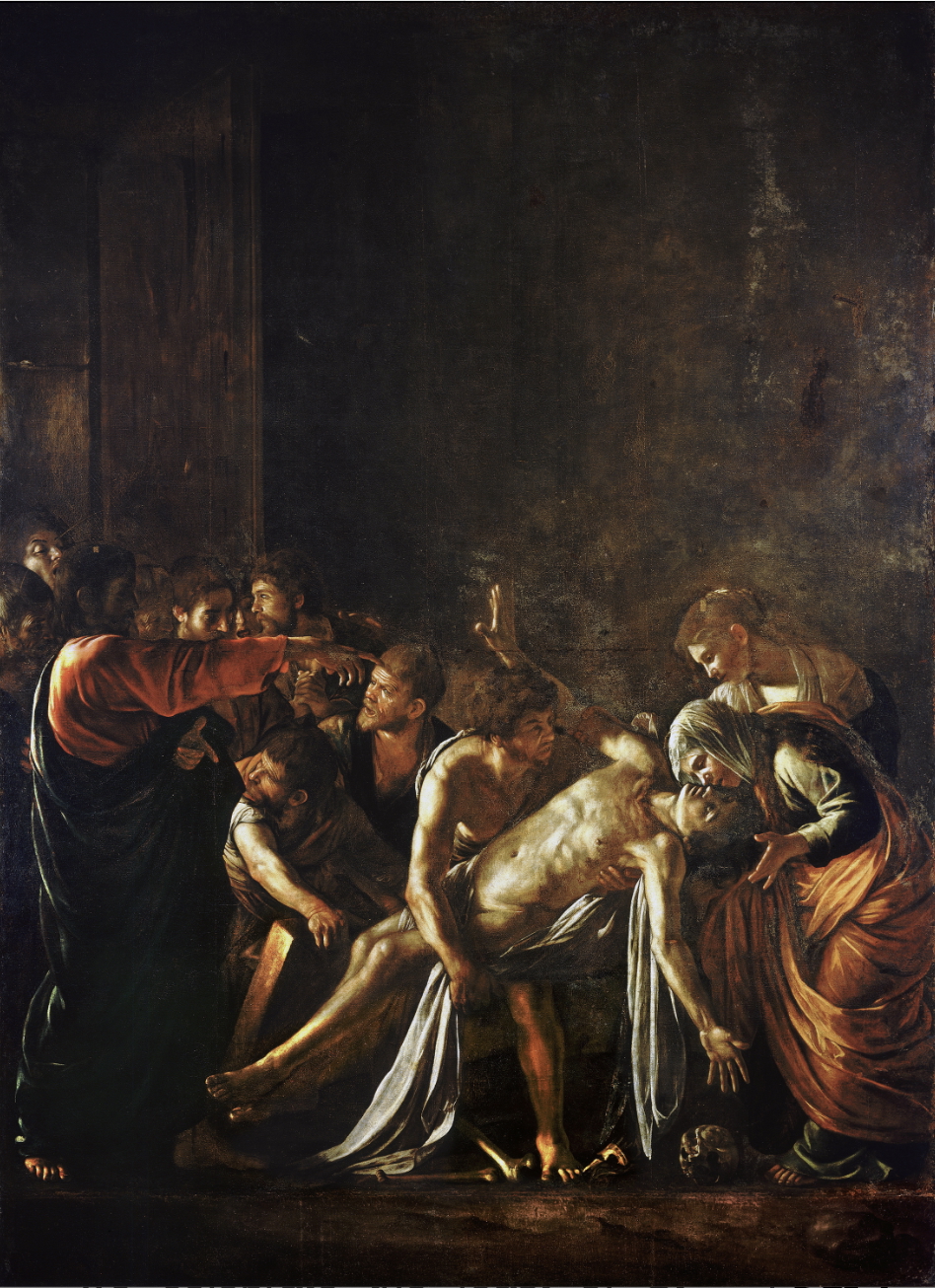
“The Raising of Lazarus”, Caravaggio, 1609, Museo Regionale, Messina Sicily.
On Tuesday, we celebrate the feast of the sibling saints Martha, Mary and Lazarus. The gospel for their feast day is John 11:19 -27, in which Martha professes faith in Jesus, before he raises Lazarus from the dead. In this work for a church in the Sicilian town of Messina, Jesus stretches out his arm as the body of Lazarus is lifted from the tomb. The grave digger supports the body at an angle with a knee under his hip and an arm behind his shoulder blades. One of the sisters, holds his face close to hers, as if she were hoping to feel his breath on her face. Jesus’ outstretched arm echoes that of God giving life to Adam as in Michelangelo’s ceiling of the Sistine Chapel in Rome. This suggests that the transition from death to life is actually happening within Lazarus but the cruciform arrangement of his limbs also prefigures the cross of Christ. In the Gospel of John the raising of Lazarus is a key reason why the enemies of Jesus resolve to put him to death (Jn 11:53). Indeed, they decided that Lazarus should die also (Jn 12:11) because for many he was a living sign of Jesus’ miraculous power. Perhaps this is why the scene looks more like a deposition or an entombment than the raising of a dead man to life. The shroud held beneath the body of Lazarus recalls “The Entombment of Christ” which Caravaggio had painted for the Chiesa Nuova in Rome, especially the detail of the hand supporting the side nearest the heart. The closeness of the heads of Lazarus and his sister recalls so many depictions of Mary and Jesus in which she holds him in death, their faces pressed together, their lips close as if they shared a common breath. Indeed, in this picture Caravaggio may be drawing on certain Byzantine icons of Mary holding her son. Actually, at the time there was a community of Orthodox Christians in Messina. But the raised arm of Christ and the hand with the index finger extended also echoes that same gesture in the artist’s “The Call of Matthew” in Rome. Both pictures share a dark interior with brightly-lit figures arranged in a frieze like manner. But here an overarching darkness extends across the whole top half of the canvas. Where another artist would have placed a celestial scene, an angel or a saint, there is only darkness. Only the extended hand of Christ counters the stark reality of death. The visual link with Christ in “The Call of Matthew” might be deliberate. Many of the Church Fathers would have understood the raising of Lazarus to also be about the forgiveness of sins. The dead Lazarus was like someone still living but weighed down by sin. As, at the command of Christ the tax collector Matthew left a life of sin behind him, so too, at Christ’s command Lazarus left the tomb and death behind him. It is thought that Caravaggio suggested this subject to his patron. Actually the patron shared the name Lazarus, but Caravaggio must have been keenly aware of his own sins. And certainly his sins and death were linked. He was “on the run” because of his crimes and the threat of death was hanging over him. The raised hand of Christ, who by his dying conquered both sin and death, may have had a more personal significance for the artist.
The Catholic Chaplaincy serves the students and staff of the University of Edinburgh, Edinburgh Napier University and Queen Margaret University.
The Catholic Chaplaincy is also a parish of the Archdiocese of St Andrews and Edinburgh (the Parish of St Albert the Great) and all Catholic students and staff are automatically members of this parish.